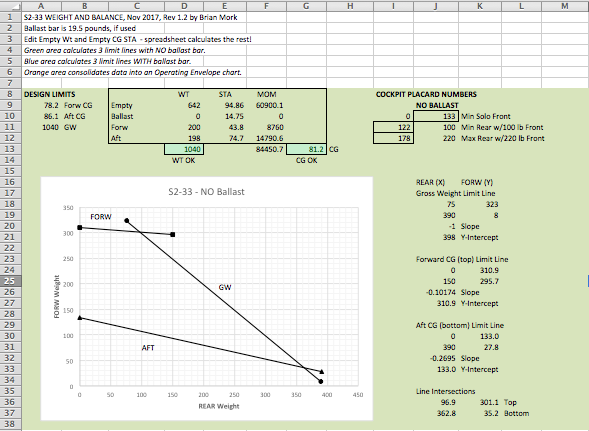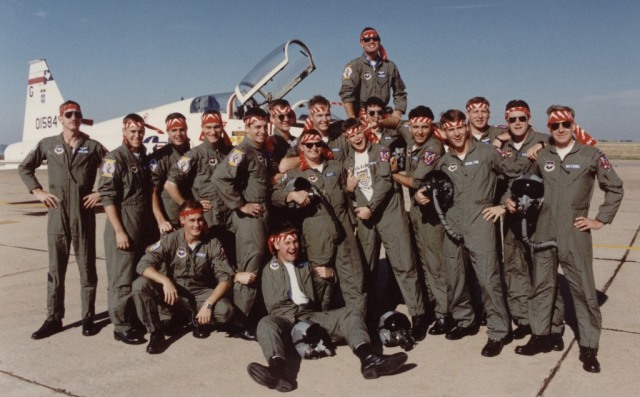
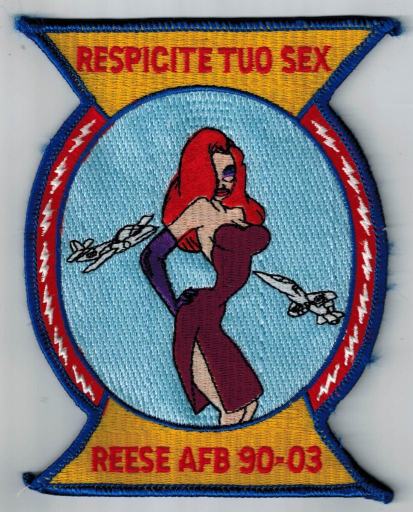
Aviation - Since 1985 aviation has been part of my life, and I've logged over 2,800 hours in over 20 different types of aircraft. I hold ATP (ME), Commercial (glider and SEL), and CFI tickets.
I learned in a Cessna 150 while attending graduate school, and briefly had possession of a Piper PA28-140 Cherokee. Coming out of graduate school, I joined the military and graduated Undergraduate Pilot Training (UPT) Class 90-03 at Reese AFB, then spent 10 years as the only Company Grade Ph.D. pilot in the Air Force (Fall 2004, there were 3 PhD pilots, and as of 2008, 1.4% of the officers have PhDs).


A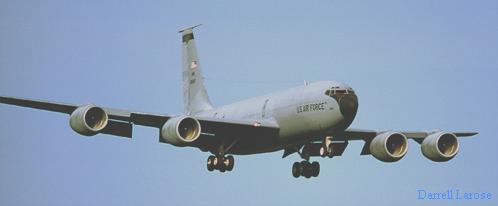 fter the
year
of Air Force pilot training
in the Cessna T-37 and supersonic Northrop T-38, I flew the Boeing KC-135,
on world-wide missions under the
Strategic
Air Command and Air Mobility Command. I flew the A, T, R, and Q
variants; The R model variant is pictured
here. While stationed at the
Air
Force Academy, I instructed cadets in basics of airmanship and flight
skills
using the TG-7A motorglider.
I flew the
KC-135 E-model with the Air Force Reserves for an additional year after
separating from Active Duty. I missed aviation, so I joined the Sandhill
Soaring Club, flew a Bellanca Scout and Piper Pawnee tow
planes, and
sometimes did commercial glider hops.
fter the
year
of Air Force pilot training
in the Cessna T-37 and supersonic Northrop T-38, I flew the Boeing KC-135,
on world-wide missions under the
Strategic
Air Command and Air Mobility Command. I flew the A, T, R, and Q
variants; The R model variant is pictured
here. While stationed at the
Air
Force Academy, I instructed cadets in basics of airmanship and flight
skills
using the TG-7A motorglider.
I flew the
KC-135 E-model with the Air Force Reserves for an additional year after
separating from Active Duty. I missed aviation, so I joined the Sandhill
Soaring Club, flew a Bellanca Scout and Piper Pawnee tow
planes, and
sometimes did commercial glider hops.
Summer of 2002, I moved to the Mojave desert of southern California and assumed duties as a Flight Test Engineer on the Airborne Laser project. This was by far the most sophisticated Directed Energy program in the world. The Airborne Laser is a 747-400 airplane with a "Megawatt class" chemical laser (specific details are classified) designed to shoot ballistic missiles out of the sky before they finish the boost phase of launch. This is almost "Star Wars 101"; who knows where this technology will be 100 years from now!
While living in California, near the epicenter of aviation research and development, I attended Flying Qualities and Performance class at the National Test Pilot School, and took a job supporting the Air Force Flight Test Center, Electronic Warfare Directorate. I performed analysis, architecture design, development, testing and evaluation for high energy lasers, high power microwave, and newly emerging directed energy systems. I worked with customers and program engineers to refine system test and evaluation plans, and develop internal processes that will produce the intellectual and physical infrastructure to support our nation's directed energy programs during the next decade. Until Spring of 2015, I was an instructor at the USAF Test Pilot School, and also performed duties at the 412 Test Wing Operations Group Standards & Evaluation office.
Regulations, From Whence they Come
- Cleaning a garage, I came across an original copy of the 1945 Federal
Aviation Regulations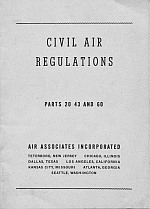 . Actually,
they were the
Civil Air
Regulations back then.
. Actually,
they were the
Civil Air
Regulations back then.
You can download a pdf copy of the entire documet (5.3 MB)
by clicking on the thumbnail image above. This took about 8 hours
of my time to cleanly reproduce the downloadable pdf. If you feel
so inclined, please drop me a paypal
dollar via services (at) increa.com.
Experimental Home-built Aircraft Comparison - Since 1982, I've been involved with the home-built Experimental class aircraft community, and have watched early individual pioneers grow an industry. I worked with Mustang Aeronautics (Midget Mustang and Mustang II) as a newsletter editor, educator, and test pilot. Between work and family commitments, I'd love to building my own Mustang II. The RV, Falco, and GP-4 are similar, and I'd be happy to correspond with anyone deciding between them. Then there's the amphibian interests that keep surfacing :-) Perhaps a Volmer VJ-22 could be in my future.
Share with me your aggregation of reasons to build one or the other. My paradigm is that no peer pressure or cost issue should ultimately decide my plane. With the support of close friends and family, those issues can be overcome. Buy or build an experimental class aircraft because you want to. Here's my attempt to sort through the issues:
| Issue | Mustang II | RV-7 or RV-9 | Falco | GP-4 | VJ-22 |
| Configuration | Tailwheel fixed, side-by-side | Tailwheel fixed, side-by-side | Tri-gear retract, side-by-side | Tailwheel retract, side-by-side | Amphbious hull, tailwheel side -by-side. Aeronca Champ wing. |
| Main Identity | Low cost | Most popular | Community. Perfection. Standardization. | Wood speedsteer | Versatility, slow |
| Cost Wag | $17+25k, 2000hr | $20k+$30k , 1200hr | $109k | $7K+$25K | $7K+ |
| Company | Entrepreneurial small company, sole proprietorship. Web. 248-649-6818. Michigan | Big company. Web. 505-678-6545. Oregon. | Entrepreneurial small company, sole proprietorship. Web. 803 353-1713. Virginia | Osprey Aircraft. "Kits" available from major supply houses. Web. 916-483-3004 California. | Volmer Club of America, Robert Albrecht (plans sale). Web. 504-436-6248. rjaflys@aol.com |
| Heritage | Bill Bushby 1960s design, rights purchased by Chris Tieman. Modular kit, or plans. | Designed by Richard VanGrunsven. | Italian commercial designer, Stelio Frati. Rights by Alfred Scott ca. 1990s. Modular kit. | Designed by George Pereira, some 40 years experience. Prototype was 1984 EAA Grand Champion Custom Built and Outstanding New Design. | Volmer Jensen in 1958. |
| Weight Load | @1800GW, 1300EW, 300lb pax, 32lb luggage, 24g
fuel. |
400lb pax, 74lb luggage, 52g fuel | @1800GW, 1150EW, 350lb pax, 146lb luggage, 22g fuel. | ||
| Engine, Fuel Burn | Lycoming 320, 8-9 gph. | 11 gph | Lycoming O-290 | ||
| Creature Comments |
39" wide cockpit, stiff gear, folding wing option. | ||||
| Mission Ops | 200 mph, 500 mi | 240 mph, 1200 mi | 85 mph, 370 mi | ||
| Web Reading | seawings, australia, | ||||
| Discussion Groups | |
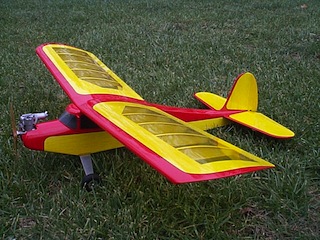 Vintage Model Airplane Plans from
R/C Sportsman magazine. This magazine
published a full-size set of plans in each issue. I scanned and
saved a bunch of the plans from 1978-1980 before selling off or
discarding the original copies. Let me know what you need.
As the world moves toward autonomous UAV drones, I want to support
people building old fashioned model airplanes!
Vintage Model Airplane Plans from
R/C Sportsman magazine. This magazine
published a full-size set of plans in each issue. I scanned and
saved a bunch of the plans from 1978-1980 before selling off or
discarding the original copies. Let me know what you need.
As the world moves toward autonomous UAV drones, I want to support
people building old fashioned model airplanes! 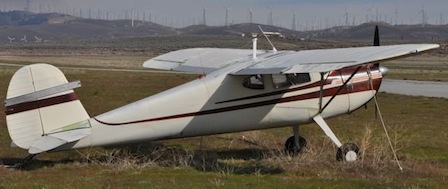 |
For eight years from 2012
through 2020, I owned a Cessna 140, with visions of putting new fabric
on the wings and teaching the family to fly. With the environment and support of folks in southern
California, that was a wonderful plan. However, when work took me back to the Midwest, life became busy and the plane sat in my garage for several years as I spent time on other required tasks. I eventually sold the plane with hopes that someone else would be able to refinish it and take it to the sky again! |
